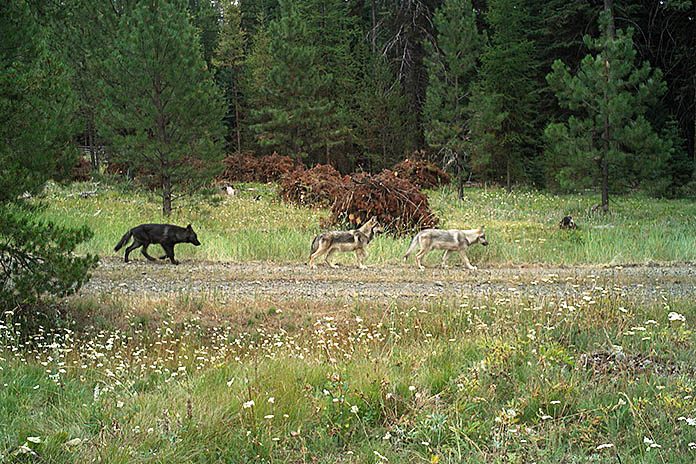More wolves were killed by humans during 2021 than any year since 2009, when wolves re-established themselves in the state, according to the latest Annual Wolf Report from the Oregon Department of Fish and Wildlife.
Oregon’s known wolf population grew by just two in 2021, from 173 in 2020 to 175. That’s the lowest annual growth rate in 13 years, according to the nonprofit conservation group Oregon Wild.
The state agency said in its report that “the actual number of wolves in Oregon is higher because not all wolves present in the state are located during the winter count.”
During 2021, the agency counted 26 wolf deaths, including 21 caused accidentally or deliberately by people. That means humans were responsible for the deaths of 12 percent of the state’s known wolf population in 2021.
Four deaths were from motor vehicle collisions, eight wolves were killed by the Fish and Wildlife Department for their chronic killing of livestock and another killing came at the hands of a rancher who claimed to be defending their livestock. The rancher was not charged. Eight wolves were killed with poison in Union County. The department is still seeking any information on the killings, and the reward for information leading to an arrest is up to $50,000.
Wolves expanded into Grant, Jefferson, Klamath and Union counties during 2021, according to the report.
The number of livestock killed by wolves went up from 31 in 2020 to 49 last year.
In January 2021, the U.S. Fish and Wildlife Service took gray wolves off of the Endangered Species List, and the state wildlife agency took over managing those populations.
In states such as Wisconsin and Montana, a change to state control led to increased poaching. Danielle Moser, wildlife program coordinator for Oregon Wild, said in a statement that Oregon’s latest report, “demonstrates the consequences of politicians prematurely stripping endangered species protections from wolves.”
In February, federal officials put wolves back on the endangered list in 44 states, including most of eastern Oregon, and took back management in those areas.










